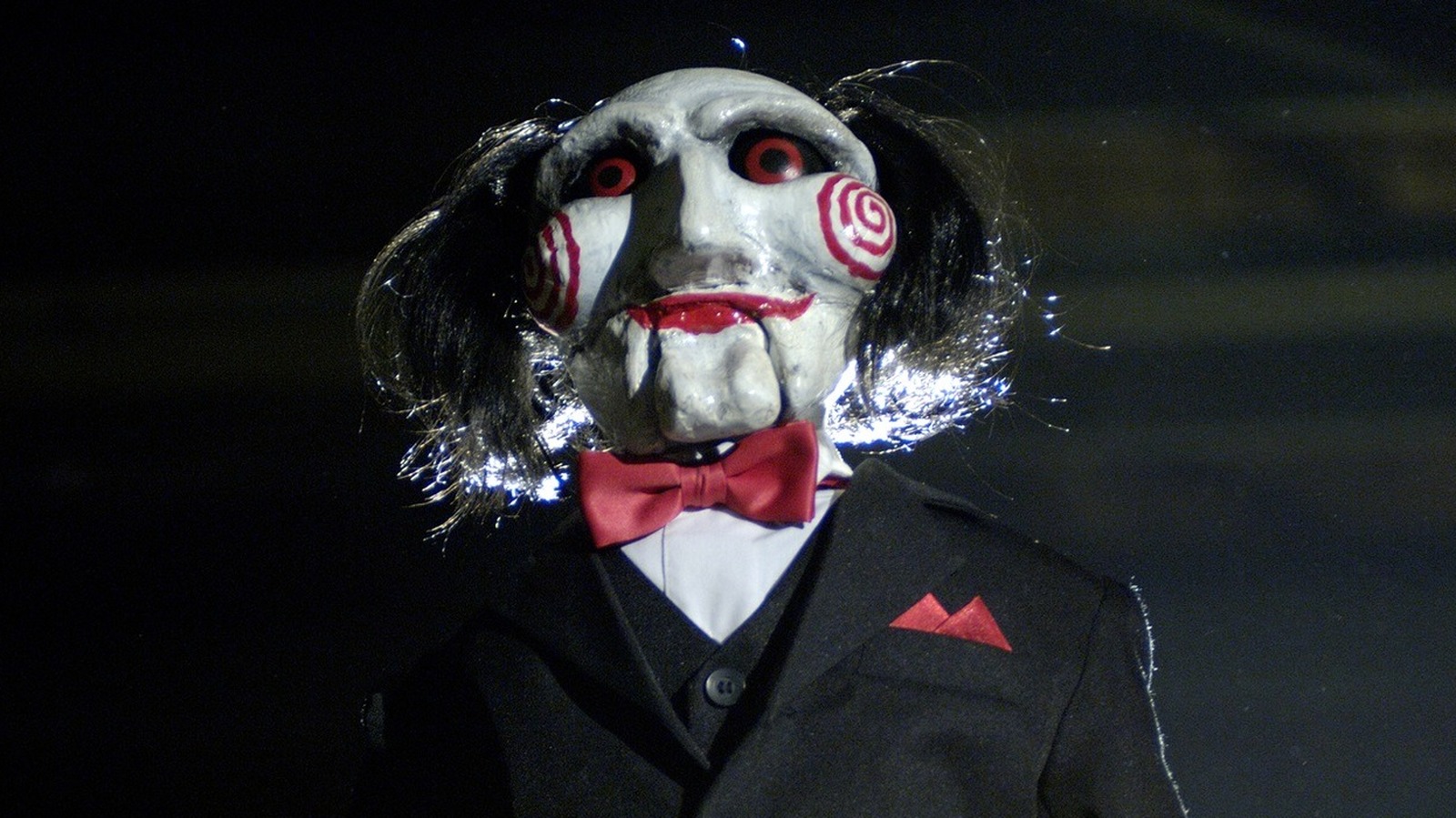
As a long-time fan of the “Saw” franchise, I must say that the recent resurgence of the series has been nothing short of exhilarating. From the gritty origin story to the intricate plot twists and gruesome traps, these movies have always had a special place in my horror-loving heart.
Back in times before 2004, saying “I want to play a game” was just a phrase for die-hard Scrabble or Clue fans. But since then, it has been forever intertwined with the infamous “Saw” series and the diabolical games orchestrated by John Kramer, aka The Jigsaw Killer, portrayed by Tobin Bell. Over the course of 10 movies, the “Saw” franchise has earned a reputation for its exceptionally gruesome brand of horror cinema. While numerous frightening films rely on jump scares or excessive gore, the violence depicted in the “Saw” films is in a league of its own. Each movie continues to invent intricately twisted traps that push people to the brink of self-destruction, leaving fans worldwide eager for more gruesome scenes of dismemberment and survival.
As a die-hard fan, I must admit that the “Saw” movie series is not for the faint-hearted or casual viewer. While it’s obvious how gruesome and terrifying these films can be, what may not be so clear is the sheer number of “Saw” movies out there. With ten installments in total, keeping track of each storyline and recurring characters can be a challenge. For instance, do you remember that movie titled “Spiral” starring Chris Rock and Samuel L. Jackson?
Saw (2004)
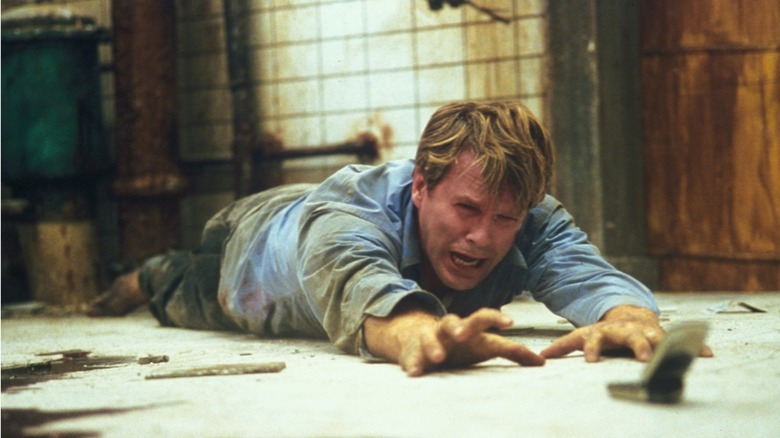
2004’s “Saw” served as the foundation for the larger “Saw” franchise, much like how “Snow White and the Seven Dwarfs” was for Walt Disney Animation Studios. Before the intricate narratives of later entries, we had the basic tale of Adam Stanheight (Leigh Whannell) and Lawrence Gordon (Cary Elwes), who found themselves handcuffed in a grimy bathroom by the Jigsaw Killer, John Kramer. In this film, Kramer introduced his signature deadly games that pushed victims to their limits for survival. Characters like Kramer, Amanda (Shawnee Smith), and Billy the Puppet were first seen here, while the saga’s focus on law enforcement officers battling Kramer was also solidified in this inaugural installment.
James Wan, director of “Saw,” and screenwriter Leigh Whannell reflected that low-budget horror films from the late ’90s, such as “The Blair Witch Project,” served as inspiration for the creation of “Saw.” The minimalistic horror style of these classics, coupled with the film’s modest budget, resulted in fewer graphic depictions of violence and intricate traps in “Saw.” However, the ominous build-up of Jigsaw’s reputation and a shocking twist ending catapulted “Saw” into pop culture fame.
In the initial “Saw” film, each story stood alone, leading subsequent movies in the series to introduce fresh characters who would reappear as both heroes and villains. Notably, many of the key figures from this first installment did not return for future films. However, the profound impact that “Saw” has had on the entire franchise and the broader horror genre during the 2000s is difficult to underestimate.
Saw II (2005)
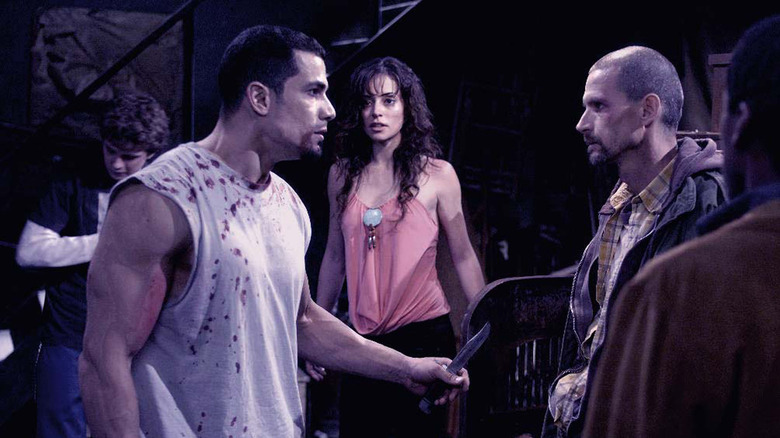
One crucial element in the movie “Saw II” was strengthening Amanda Young’s character within the series narrative. In the initial “Saw,” she gained a unique standing as the sole survivor of the Jigsaw Killer/John Kramer’s deadly traps. In “Saw II,” she reappears among several individuals caught in a house designed with lethal mechanisms by Jigsaw. Initially, she seems like another victim trying to survive, but it is later revealed that she has been working alongside Kramer. Amanda values the impact Kramer had on her so much that she chooses to work with this villain. By the end of “Saw II,” Amanda announces her intention to replace John Kramer as the new Jigsaw killer, thus introducing a new layer of complexity to the franchise’s roster of unforgettable antagonists.
In the movie titled “Saw II,” Kramer delves into the symbolism behind his moniker Jigsaw, which refers to him removing puzzle piece-like pieces of flesh from his game participants. Additionally, writer-director Darren Lynn Bouseman joined the “Saw” series with this film. Originally, he had no connection to the franchise, but his spec script “The Desperate” was reworked into “Saw II.” Later, he directed “Saw II” and went on to direct three more films in the “Saw” series, including the 2021 release “Spiral: From the Book of Saw.” Notably, “Saw II” generated over $150 million worldwide while only costing $5 million to produce, demonstrating that this horror franchise was here to stay.
Saw III (2006)
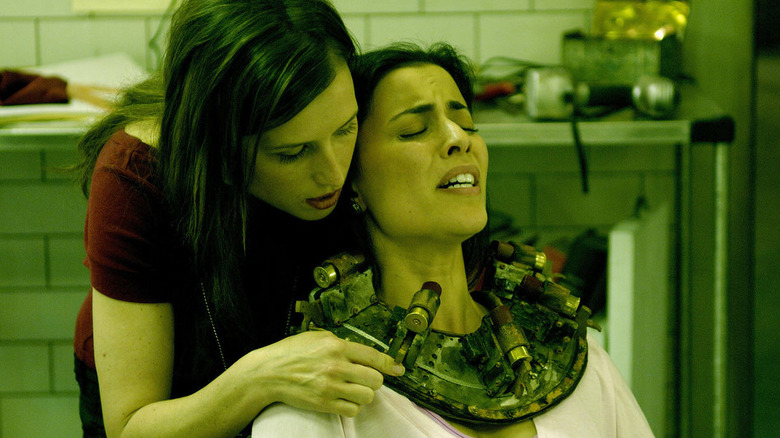
In “Saw III,” the traps become even more gruesome and deadly than before. No matter how well you navigate the clues and rules, there’s no escaping. The hope of victory that was present in traditional Jigsaw traps is gone, replaced by Amanda, who pushes the traps to a darker, more sinister level. The story then focuses on new character Jeff (Angus Macfadyen), whose challenges mirror Amanda’s desperate attempts to keep John Kramer alive. “Saw III” ends with a significant twist for the series: both John Kramer and Amanda die and are not revived in later movies. Although they had been the faces of evil up until then, their presence is only kept alive through pre-recorded videos and flashbacks in subsequent installments. Essentially, “Saw III” marks the end of these two antagonists.
In this segment, we briefly meet Mark Hoffman (played by Costas Mandylor), a police officer who might have been overlooked by many moviegoers in 2005. However, throughout the initial movies, Hoffman becomes a consistent and significant figure in the expansive “Saw” narrative. As the old guard fades away, a new antagonist emerges, marking a pivotal moment in the franchise that broke box office records globally and has yet to be surpassed. The climax of “Saw III” marked John Kramer’s demise, but with such substantial earnings, it was impossible for the “Saw” series to end there.
Saw IV (2007)
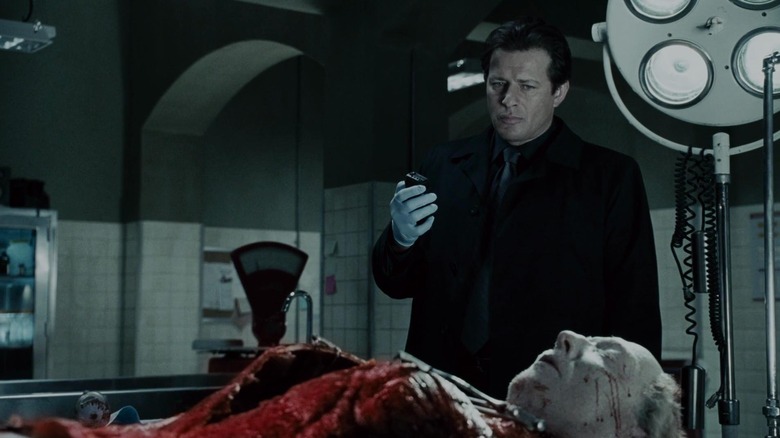
In “Saw III,” Hoffman made a brief appearance, but in “Saw IV” he takes center stage. This movie follows the ongoing terror of Jigsaw even after his demise. The traps in this installment primarily target Officer Daniel Rigg (Lyriq Bent), continuing the pattern seen in previous films where law enforcement officers encounter grisly scenes and confront their troubled pasts. “Saw IV” is known for its extensive use of non-linear storytelling, a technique used to bring Tobin Bell’s character, John Kramer, back into the narrative through flashbacks. Essentially, death doesn’t seem to diminish Kramer’s screen presence in this film.
As a dedicated fan of the Saw franchise, I must admit that Saw IV didn’t quite hit the mark for me. The excessive graphic content, while a staple of the series, felt overly tiresome in this installment. Being the fourth film in such a short span of time, the rapid release schedule seemed to make the familiar elements of each Saw movie more apparent, and even an intricate storyline couldn’t revitalize the franchise for me. Looking back, however, I do appreciate that Saw IV effectively set up Hoffman as the primary antagonist for the next three films, adding a fresh twist to the narrative.
Saw V (2008)
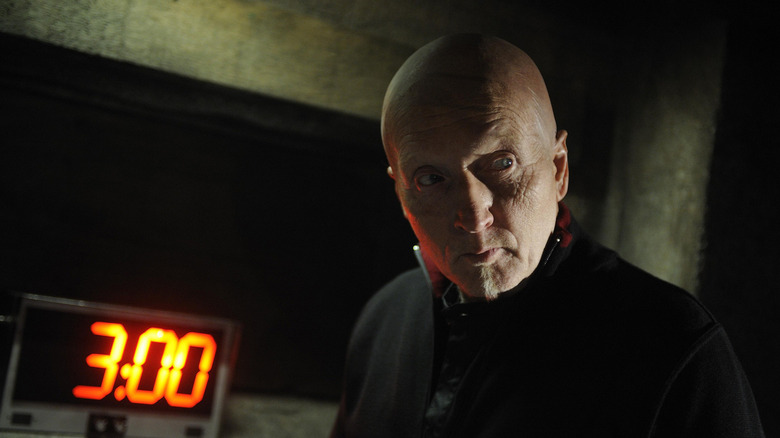
Following three back-to-back productions, Darren Lynn Bousman departed the “Saw” series to delve into other horror projects. David Hackl, who had previously served as a production designer and second unit director on all prior “Saw” sequels, was then tapped to take charge of this installment. In “Saw IV,” Hoffman carries on his dual role as an investigator and the one responsible for preserving Jigsaw’s legacy. Agent Strahm (Scott Patterson) reappears from “Saw IV,” persisting in his quest to uncover the truth behind this universe’s brutal killings. The intricate plotlines culminated in one of the most critically panned “Saw” films and one of only two with a CinemaScore grade lower than a B- from viewers. Even dedicated followers of the “Saw” series started to respond to these movies with indifference.
In a significant drop in creativity for the Saw series, which is known for its horror and torture themes, Saw V continued this downward trend but managed to maintain financial success. The film opened domestically with over $30 million, marking the fourth consecutive Saw movie to do so, showcasing the strong draw of the franchise in the late 2000s. Globally, it earned more than $118 million on a budget of only $10.8 million, making it another highly profitable installment for everyone involved. However, despite its financial success, many felt that Saw V represented a creative low point for the series, with critics missing Tobin Bell’s presence even more than before. Despite efforts to develop Detective Hoffman as a replacement, he was not able to fill the creative void left by Bell in the Saw franchise.
Saw VI (2009)

Among all the “Saw” series follow-ups, “Saw VI” might have built the most devoted cult audience due to its bold decision to tackle contemporary issues. Its narrative revolved around the American healthcare crisis, with characters trapped in Jigsaw’s traps being health insurance executives who deny help to those desperately needing treatment, such as John Kramer himself. The subtle social critique lies in the fact that the suffering these characters experience in “Saw VI” is arguably overshadowed by capitalism deciding who qualifies for healthcare. After numerous installments immersed in complex “Saw” backstory, a plotline focusing on highly relevant themes was a welcome change for both dedicated “Saw” fans and casual moviegoers. This edition also featured Shawnee Smith returning to shoot new scenes as beloved character Amanda.
Regrettably, even though these virtues were present, “Saw VI” couldn’t escape a disappointing performance at the box office. The decision to adhere to the late October release tradition of all previous “Saw” movies proved detrimental as it coincided with the highly anticipated debut of “Paranormal Activity.” This horror film, which captured the essence of Halloween 2009, essentially buried “Saw VI.” Earlier promotions for new “Saw” installments had boasted, “If it’s Halloween, it must be ‘Saw.'” However, this certainty in the franchise’s success was dashed when “Saw VI” earned approximately $50 million less than its predecessor. Newcomer director Kevin Greutert injected new life into the series’ creativity, but it seemed that the audience simply wasn’t interested.
Saw 3D (2010)
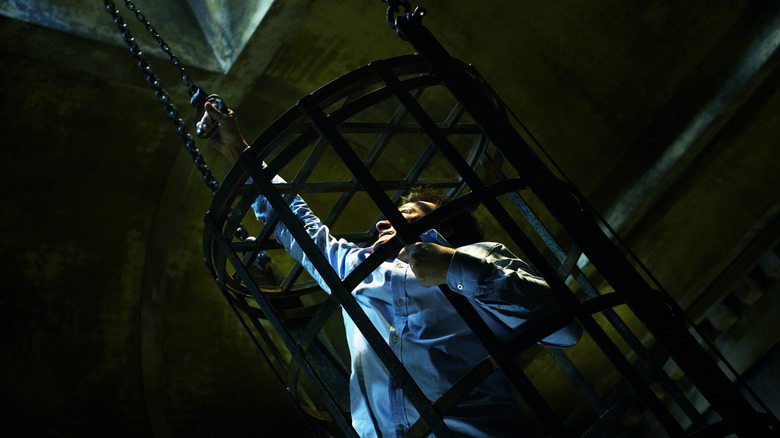
The most significant impact of “Saw VI” was pushing its sequel to include a lot more story elements than initially planned. Originally, two more “Saw” movies were intended to conclude key aspects of the series’ narrative, but instead, these were compressed into a single storyline that unfolded in 2010’s “Saw 3D.” This was the first (and currently only) “Saw” movie to employ digital 3D technology, and it was designed to make long-time series enthusiasts believe that the entire “Saw” franchise had been building towards “Saw 3D.
Similar to its predecessors, “Saw 3D” features two interwoven storylines. One follows a fresh character, Bobby – an untruthful author portrayed by Sean Patrick Flanery, who finds himself entangled in a series of gruesome Jigsaw traps. The other storyline centers around Hoffman and explores intricate “Saw” lore. Eventually, Hoffman’s thread leads to Dr. Gordon’s (played by Cary Elwes) return to the “Saw” series after an absence of six years.
The movie titled “Saw 3D” offered an abundance of themes and visual effects, including the use of 3D technology, but its attempt to satisfy fans with excessive gory 3D horror scenes and references failed to produce a new horror masterpiece. Critics were highly critical of this film, with many stating that the lack of originality and scares in these movies made their ending a positive development. Interestingly, its box office performance saw a substantial improvement compared to “Saw VI,” which might have been partly due to the higher cost of 3D tickets.
Jigsaw (2017)
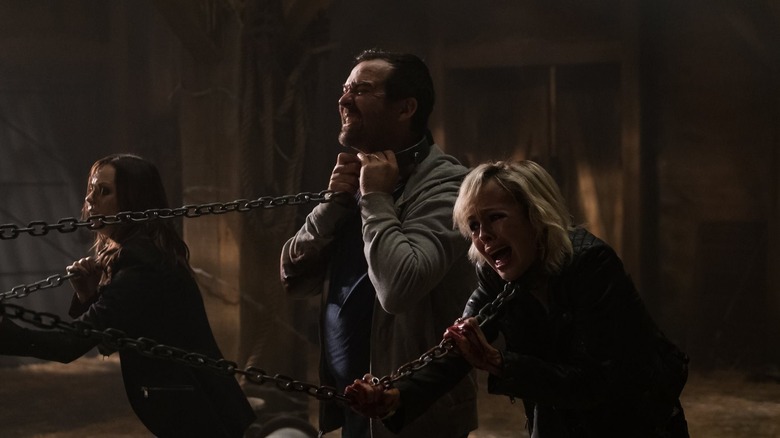
As a die-hard fan, I missed the chilling presence of “Saw” on the big screen for an astonishing seven years – longer than the initial six-year run of its annual releases that ruled the horror scene during the 2000s. Despite being led to believe that “Saw 3D” marked the end of this profitable horror series, it was only a matter of time before Jigsaw’s sinister traps made their way back onto our screens. The long-awaited return came in late October 2017 with “Jigsaw,” the latest installment (so far) in the “Saw” franchise to launch during its signature Halloween season.
This particular film was intended to steer the “Saw” series towards a new, more approachable path, as hinted by its choice of directors. As a result, it stands as the only “Saw” movie released after 2004 that wasn’t directed by either Bousman, Hackl, or Greutert. Instead, the Spierig Brothers, who previously directed “Daybreakers” and “Predestination”, took charge of the production.
Although the creators aimed to set “Jigsaw” apart from previous “Saw” movies by introducing new elements, it essentially followed the same pattern as its predecessors – presenting trapped individuals dealing with traps and detectives solving crimes. Upon release, “Jigsaw” received a lukewarm response from critics, much like how “Saw VI” was overshadowed by “Paranormal Activity” in 2009. In this instance, “Jigsaw” faced competition from another horror film called “Happy Death Day,” which showcased more originality and creativity compared to “Jigsaw.” While “Jigsaw” managed decent box office numbers, it failed to convincingly explain why the “Saw” franchise needed to return after its apparent demise.
Spiral: From the Book of Saw (2021)
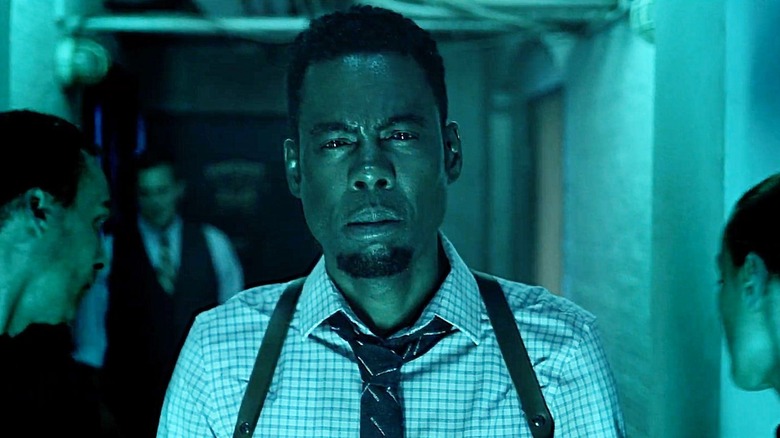
In contrast to “Jigsaw” being a slight modification of the “Saw” formula, “Spiral: From the Book of Saw,” released in May 2021, significantly transformed audience expectations from these titles. Instead of continuing the established “Saw” narrative, this film presented an entirely new tale revolving around a Jigsaw-inspired serial killer. This antagonist focuses on murdering police officers, which ultimately draws in Detective Zeke Banks (Chris Rock) and his father, Marcus Banks (Samuel L. Jackson), who is also a cop.
In the latest installment of the series, directors Darren Lynn Bousman and Josh Stolberg, who previously worked on this franchise, were back at the helm. However, the character John Kramer/Jigsaw appeared only in photographs. Despite Jigsaw’s absence, the film retained its signature gruesome traps and a dark, suspenseful ending similar to earlier films. Additionally, certain editing and cinematography styles reminiscent of previous entries could still be found in “Spiral.
The shift in focus from the franchise’s traditional protagonist (Billy) to a new antagonist (Mr. Snuggles) and an uncharted part of the “Saw” universe was a daring decision on paper, but the movie “Spiral” didn’t gain much traction. Critics particularly criticized the over-dramatic acting and predictable plotline of Rock. Since “Spiral” felt so disconnected from other “Saw” films, the franchise soon moved away from Zeke Banks’ storyline. Any loose ends or potential connections between “Spiral” and the broader “Saw” mythology have not been explored. The producers of the series openly discussed the main issue with “Spiral.” Although the film wasn’t lacking in ambition, it failed to win over fans of the “Saw” franchise.
Saw X (2023)
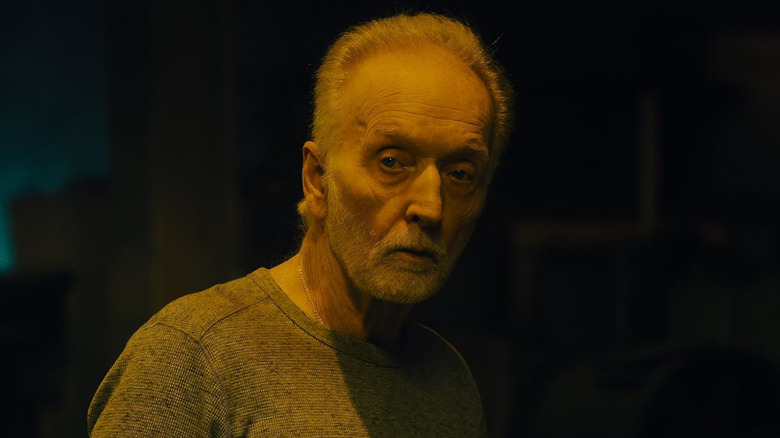
Following the release of “Saw 3D,” the “Saw” series had been striving to make changes, leading up to “Spiral” where they aimed to introduce a fresh version of the Jigsaw Killer and discard all previous storylines. However, in 2023 with “Saw X,” the “Saw” franchise found its way back on course by making an ingenious decision: centering the narrative around John Kramer. In most prior films, Kramer was either relegated to flashbacks or dying in a bed. But “Saw X” took place between “Saw” and “Saw II,” allowing Kramer to take center stage for this installment. This movie showed Kramer seeking an unorthodox cancer treatment in Mexico, only to discover it was a scam. As retribution, he subjected the perpetrators to various gruesome Jigsaw traps.
In the first “Saw,” character John Kramer was spoken of with quiet fear as a ruthless madman. Fast forward nearly 20 years, in “Saw X,” he’s portrayed as a main character who even acquires a young companion, Carlos (Jorge Briseño), whom he later attempts to rescue from the evil antagonist Cecilia Pederson (Synnøve Macody Lund). Fans of the “Saw” series found this installment particularly appealing. Not only did it bring back Shawnee Smith in a significant role as Amanda Young, but it also received positive reviews that were unusual for a “Saw” movie. In essence, “Saw X” rejuvenated the franchise for a new era.
What is the future of the Saw movies?
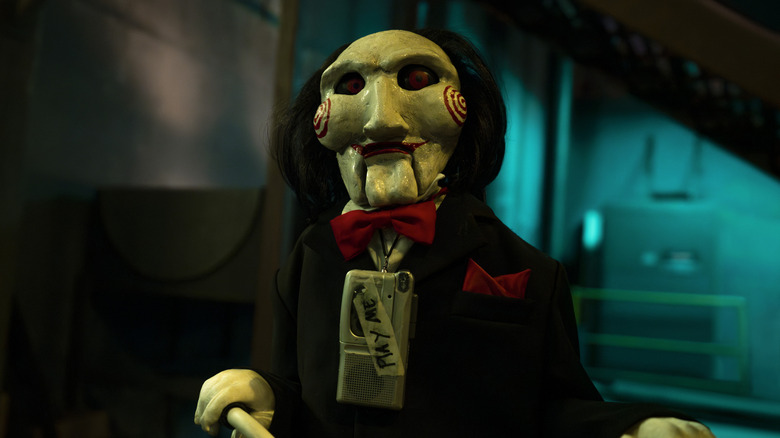
The final scene of “Saw X” left room for a potential sequel, with villain Cecilia still alive and seeking revenge. As of September 2025, “Saw XI” is scheduled to be released, directed by Kevin Greutert and written by Marcus Dunstan. Plot details for the upcoming film are currently under wraps, but Dunstan hinted that it will involve a vengeful spirit. Original actor Tobin Bell has confirmed his return as John Kramer in this installment, ensuring that the most iconic character of the “Saw” series will continue. Despite dying in “Saw III,” the “Saw” franchise continues to keep Kramer alive, much to the joy of fans who are passionate about the series.
Is there any news about the other part of the “Saw” series from the 2020s, specifically “Spiral 2”? Since Chris Rock expressed interest in additional “Spiral” installments and the movie ended on a suspenseful cliffhanger, it seemed likely that a sequel would be made. However, due to the film’s disappointing performance at the box office and mixed reviews from critics, plans for further “Spiral” movies were put on hold. At this moment, the “Saw” franchise is focusing mainly on John Kramer and other characters from earlier “Saw” films. A mid-credit scene in “Saw X” even suggested that Detective Hoffman might return in future sequels. For now, it appears that the “Saw” movies will continue to be produced, but don’t expect them to include more of Chris Rock’s involvement.
Read More
- Grimguard Tactics tier list – Ranking the main classes
- Gold Rate Forecast
- 10 Most Anticipated Anime of 2025
- USD CNY PREDICTION
- Box Office: ‘Jurassic World Rebirth’ Stomping to $127M U.S. Bow, North of $250M Million Globally
- Silver Rate Forecast
- Black Myth: Wukong minimum & recommended system requirements for PC
- Mech Vs Aliens codes – Currently active promos (June 2025)
- “Golden” Moment: How ‘KPop Demon Hunters’ Created the Year’s Catchiest Soundtrack
- Castle Duels tier list – Best Legendary and Epic cards
2024-12-21 22:31